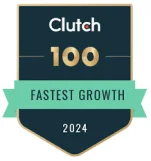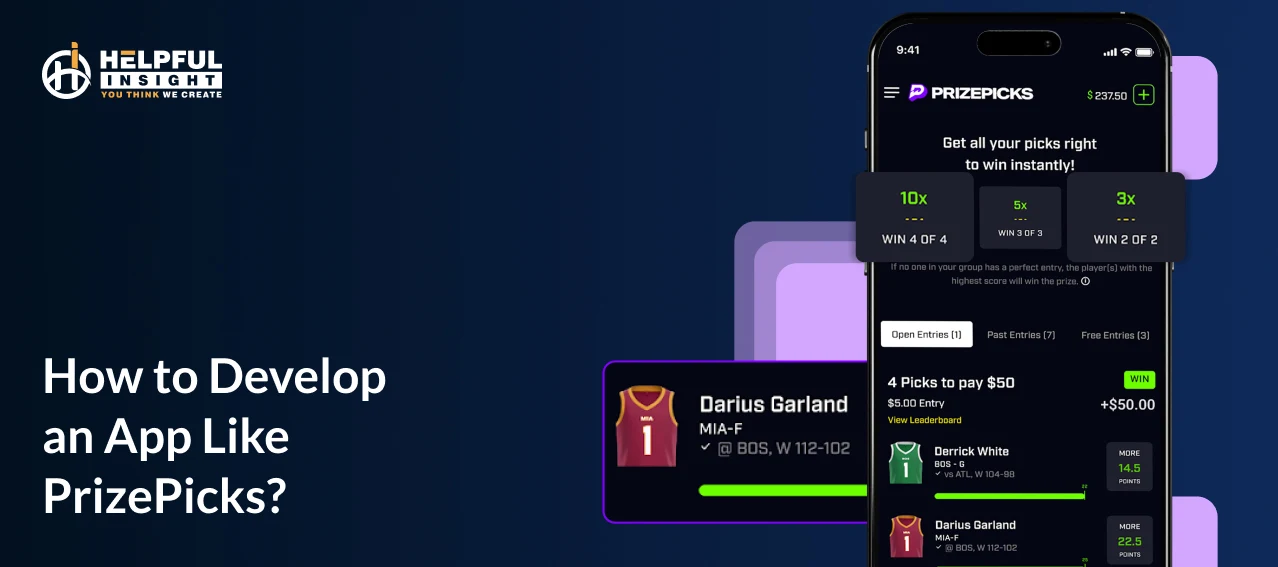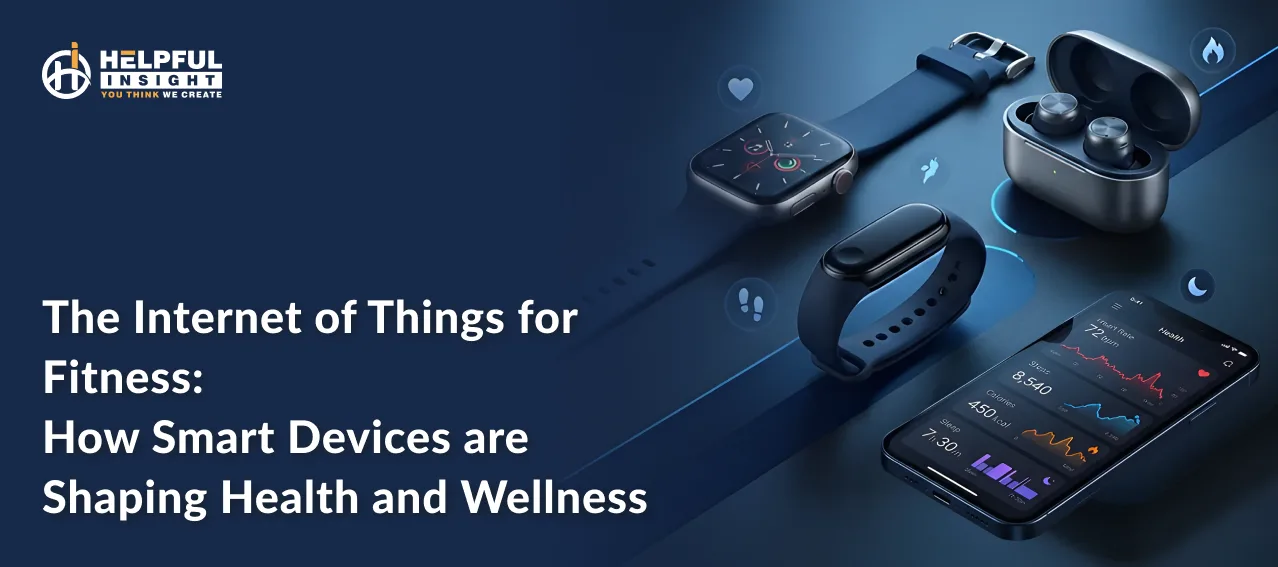By 2025, there will be over 5 billion apps available on Android and iOS app stores, collectively expected to generate $350 billion in revenue. This statistic underscores the integral role mobile apps now play in people’s daily lives. The pervasive use of mobile apps is driving businesses to adopt the latest technology trends in app development.
Mobile apps span numerous categories and cater to various industry verticals. Many businesses are achieving significant growth through enhanced traffic, conversions, and revenue thanks to these apps. This blog aims to help you brainstorm app ideas and develop a new app within one of the most popular categories.
Mobile App Satistics:
- Of millennials, 21% open an app more than 50 times daily.
- Over 11+ times a day, 49% of users open an app.
- In the US, apps account for 70% of digital media.
- A typical smartphone user downloads and uses ten daily applications and 30 apps monthly.
- 3,562,951 mobile apps are available in the Google Play Store , with 1,114,154 app publishers. Of 3,562,951, 455,022 are gaming apps, and 3,107,929 are non-gaming apps.
Unlock Epic Success: Top Mobile App Categories for 2025 and Beyond!
In the dynamic world of mobile app development, choosing the right category is crucial for achieving monumental success. Let’s explore the trending categories that promise to elevate your app to new heights of popularity and acclaim!
Food Delivery App
The rise of food delivery services for restaurants and food outlets, accelerated by the launch of Uber, has become a global phenomenon. This popular app category faced significant challenges due to lockdowns, changes in government regulations, and evolving customer behaviors. However, businesses that adapted to these shifts have continued to thrive.
The food delivery market is projected to grow to $320 billion by 2029, with expected revenue reaching $0.91 trillion. This substantial growth and revenue potential encourage restaurateurs to adopt mobile applications for their services.
Having a dedicated restaurant and food delivery app offers numerous advantages. It provides greater control over the business and improves profit margins, as it eliminates the need for third-party services that take a commission on transactions. A specialized app can manage delivery orders, send personalized offers, and run a loyalty program, enhancing customer engagement and satisfaction.
Examples of popular restaurant and food delivery apps include Swiggy, Zomato, Faasos, Holachef, and Dunzo. These apps demonstrate the potential success and benefits of embracing mobile technology in the food delivery industry.
Education Apps
Education apps come in many forms, but they all share the common goal of educating and informing users. Among these, e-learning apps have seen a significant rise in popularity. The education industry has recognized the value of these apps beyond traditional schools and universities. The surge in enrollment at platforms like Udemy and the increased signups at Duolingo demonstrate the growing seriousness with which people are embracing e-learning.
E-learning apps for children have also been launched, targeting subjects with engaging animations and music to facilitate easier understanding. Kids Learning Tube is a prime example of such an app. The education app segment, which reached $4.99 billion in downloads in 2022, is projected to generate $9.55 billion in revenue by 2027. This significant growth underscores the high adoption rate of educational apps.
The widespread usage of these apps makes them a compelling opportunity for development, especially in markets such as the USA. Developing an education app can leverage this trend and tap into a rapidly growing market.
Examples of popular education apps include Duolingo, Sololearn, Photomath, edX, and Khan Academy. These apps illustrate the diverse ways in which technology can enhance learning experiences and make education more accessible to everyone. Additionally, apps like Coursera and LinkedIn Learning have also gained traction, offering professional development courses and skill-building opportunities. With the increasing demand for flexible and accessible learning options, the potential for education apps continues to expand.
Lifestyle Apps
Lifestyle apps cover a broad category designed to enhance various aspects of daily living. This category includes fitness apps, dating apps, music apps, travel apps, food apps, and more. These apps seamlessly integrate with users’ lifestyles, making their lives more convenient and enjoyable.
For instance, lifestyle apps allow users to reserve a specific table at their favorite restaurant and order their meals in advance, ensuring the dishes are ready upon arrival. Additionally, taxi and cab booking services like Uber enable users to book a specific type of vehicle for a particular date and time, complete with predetermined amenities. Fitness apps, on the other hand, support healthy living by providing personalized workout routines, nutrition advice, and progress tracking.
The lifestyle app category also extends to home automation, mental wellness, and personal organization. Apps like Amazon Alexa and Tuya Smart allow users to control their smart home devices effortlessly. Mental wellness apps such as Headspace offer guided meditation and mindfulness exercises to help users manage stress. Personal organization apps like Daylio help users track their moods and habits, promoting self-awareness and productivity.
Popular examples of lifestyle apps include Daylio, Amazon Alexa, Tuya Smart, Headspace, and Fliqlo. Other notable mentions are MyFitnessPal for fitness tracking, Tinder for dating, Spotify for music streaming, and Airbnb for travel accommodations. The versatility and convenience offered by lifestyle apps make them an essential part of modern living.
Social Media Apps
Nearly 59% of the world’s population uses social media, spending an average of 2 hours and 31 minutes daily on various platforms. This widespread usage highlights how integral social media has become for connecting with others both within and outside one’s social circles. The ability to instantly share images, videos, and messages has made these apps indispensable in daily life.
Businesses are capitalizing on this trend by launching new social media apps with unique features tailored to specific audiences, resulting in significant user engagement and increased app downloads. Popular platforms such as Instagram, WhatsApp, Twitter, and Facebook excel at sharing images and short video snippets.
Additionally, businesses are incorporating social sharing functionalities into their apps to enhance user engagement. For example, the Strava app, which tracks user activities, allows users to share their achievements on social media, encouraging them to improve their performance. This integration of social features not only boosts app usage but also fosters a sense of community among users.
Popular social media apps include Instagram, WhatsApp, Twitter, Facebook, and emerging platforms with specialized functions. These apps demonstrate the dynamic nature of social media and its potential for continuous innovation and user engagement.
Game Apps
The game app market within the entertainment industry is fiercely competitive, with millions of apps available. These apps cater to diverse audiences and offer various playing styles, whether solo or in groups. Despite the crowded market, game apps generate a substantial portion of revenue, accounting for 61% on iOS and 77% on Google Play.
The expansion of monetization methods, from premium downloads to in-app purchases, subscriptions, and other upgrades, has paralleled the growth of game genres. Mobile games now range from hyper-casual to action, adventure, and intricate RPGs. Emerging technologies, such as AR in Pokémon Go, have elevated gaming experiences, drawing large user bases and significant revenue.
Examples of popular game apps include Pokémon Go, Bloons TD6, Candy Crush, Clash of Clans, and Monument Valley.
From gaming to e-commerce, we create apps that thrive in any market.
Productivity Apps
Productivity apps are a popular category aimed at simplifying complex tasks and helping users complete them quickly and efficiently. These apps are not just for office employees; they cater to anyone looking to streamline their daily activities. For instance, Evernote and Wunderlist help users manage tasks efficiently with reminders for daily to-dos.
Some productivity apps focus on a single task, while others assist with multiple tasks. Google Drive, for example, allows users to save and access various types of files across multiple devices. Businesses can identify gaps in productivity needs and creatively fill them with intuitive app designs that simplify tasks and enhance user experience.
Examples of popular productivity apps include Evernote, Wunderlist, Google Drive, Microsoft OneNote, and Todoist.
Business Apps
From SMBs to large enterprises, businesses need digital tools to enhance daily operations and workflows. Technological advancements have enabled many processes, once confined to desktops, to be managed on mobile devices. Business app development has mobilized and automated processes, making operations more efficient. Entrepreneurs and startups recognize the value of mobile apps for their businesses, aiming to achieve significant results.
Popular business apps include Slack, Skype, Microsoft Teams, and GoToMeeting for communication; QuickBooks, FreshBooks, and Wave for accounting; Salesforce and Nimble for customer relationship management; and Trello and Asana for project management. These apps are widely used across various industries, highlighting the lucrative opportunities in business app development.
Examples of popular business management apps include Slack, Asana, Square, QuickBooks, and Trello.
Healthcare Apps
In the last decade, technological advancements have significantly improved patient-centric care delivery. Healthcare app development covers a broad range of applications, including appointment booking, virtual consultations, pharmacy delivery, diet and nutrition tracking, exercise and yoga, mindfulness, and meditation apps.
The global patient-centric healthcare app market is expected to grow at a CAGR of 20.5% from 2023 to 2028. The pandemic has accelerated the adoption of healthcare apps, enabling organizations to improve accessibility to healthcare services, optimize operations and staff management, and enhance administrative processes.
Examples of popular healthcare apps include Doctor on Demand, TelaDoc Health, WebMD, Epocrates, EyeCareLive, Heal, MDLIVE, and Apple Health.
Care Apps
The pet care market is thriving, driven by rising income levels, increasing pet humanization, and favorable reimbursement policies. It’s projected to grow to $550 billion by 2032, with a compound annual growth rate (CAGR) of 7% from 2022 to 2032. Additionally, spending on pet care products is expected to surge to $145 billion by 2032. Pet owners are increasingly willing to invest in high-quality care for their pets, presenting a lucrative opportunity for online pet care businesses.
Launching a pet care business online is a fast track to growth, and a dedicated pet care app can play a crucial role. Pet care apps offer numerous benefits to both service providers and pet owners, enabling optimal care for pets. The category includes various types of apps, such as those focused on feeding, training, veterinary care, and grooming, which cater to both entrepreneurs and pet owners.
Popular examples of pet care apps include Chewy, Rover, Dog Monitor, 11pets, WeRescue, Whistle, PetCube, and BarkHappy. These apps demonstrate the diverse needs and preferences of pet owners and the broad scope of services that can be offered through mobile platforms.
Grocery Delivery Apps
The development of grocery delivery apps has surged, inspired by innovations like Amazon Fresh, which promises ultrafast grocery deliveries. This trend is transforming grocery shopping, making it a prime opportunity for entrepreneurs to create new mobile applications. In the USA, grocery delivery sales are expected to double to $121 billion by 2025, reflecting a sustained trend in purchasing groceries via mobile apps.
Another significant trend is the “click and collect” model, which addresses cost and last-mile logistics challenges. This model provides a lucrative entry point for grocery stores looking to expand their digital presence and profitability. Businesses should conduct thorough market research and understand their target audience to identify gaps and fill them intelligently with grocery delivery app development.
Examples of popular grocery apps include Instacart, AnyList, Zepto, Grofer, Dmart, and JioMart. These apps highlight the evolving landscape of grocery shopping and the opportunities for innovation and convenience.
Finance Apps
The financial sector has experienced significant transformation over the last decade, driven by technological advancements and relaxed government regulations. Mobile applications have become essential for banks, insurance companies, and trading firms to enhance customer service, streamline operations, and reduce infrastructure costs. The increased accessibility to banking services through mobile apps has significantly boosted user satisfaction.
The mobilization of financial services has enabled banks, stock trading companies, cryptocurrency firms, and insurance companies to increase revenue. Consequently, the finance category has gained traction, and many business owners are developing fintech apps to stay current with trends, meet customer needs, and maintain a competitive edge.
Examples of popular finance apps include Mint, Wallet, YNAB, EveryDollar, Rocket Money, Personal Capital, and GoodBudget. These apps illustrate the diverse ways financial technology is improving user experiences and financial management.
Travel Apps
Travel apps simplify the complexities of travel management by seamlessly connecting various services. These apps assist users with finding and booking hotels, flights, and taxis; discovering restaurants at travel destinations; exploring new places to visit; and managing other travel-related activities.
The shift from traditional travel planning to mobile solutions has expanded the travel app market, which is expected to reach $533 million in revenue by 2027. Technologies such as big data, chatbots, augmented reality (AR), virtual reality (VR), artificial intelligence (AI), and fintech are revolutionizing travel apps, offering unique functionalities and enhancing user experiences.
Popular travel apps include Airbnb, Uber, Booking.com, Expedia, Hopper, and other ride-sharing apps. These apps showcase the potential of mobile technology to transform the travel industry by making travel planning more convenient and accessible.
Cooking Apps
The surge in smartphone usage has sparked a growing demand for cooking solutions that offer access to a vast array of recipes and culinary resources. Cooking apps revolutionize the way both amateurs and professional chefs approach cooking, providing accessible recipes and cooking tips, often accompanied by nutritional information, to make the culinary experience engaging and enjoyable.
These apps enable users to explore diverse cuisines, discover recipes, compile shopping lists, and even order ingredients directly. With interactive interfaces fostering connections among cooking enthusiasts, these apps have become indispensable tools for cooks worldwide.
Research indicates that the global recipe apps market size is projected to reach $1103.98 million by 2028, with a compound annual growth rate (CAGR) of 12.87% during 2022-2028.
Examples of popular cooking apps include Tasty, Feedly, Yummly, and SuperCook, each offering unique features to cater to diverse cooking needs and preferences.
Fitness
Fitness enthusiasts are keenly aware of their health and fitness and eagerly track their progress using fitness apps to meet their goals. This mobile app category spans a wide range of functionalities, including fitness tracking, calorie counting, heart rate monitoring, step counting, and more. These apps suggest exercises or workouts based on the user’s health status and eating habits.
Leveraging IoT technology, fitness app extensions for wearables like smartwatches, smart shoes, and fitness bands are becoming increasingly popular. These devices continuously track daily routines and send data to fitness apps, which then adjust exercise routines accordingly. The growing user penetration for health and fitness apps boosted market revenue to $6.86 billion till 2024. The surge in fitness app downloads demonstrates the lucrative potential for businesses.
Popular fitness apps include Nike Training Club, Strava, FitOn, Adidas Training, Peloton, and Fitbit Premium.
Entertainment
Entertainment apps provide various forms of entertainment on mobile devices, including games, movies, music, and discussions. They enable users to enjoy entertainment on the go, which has led to a significant increase in app downloads (both paid and free) and in-app purchases. According to Statista, total revenue in this sector is expected to grow at an annual rate of 10.64%, reaching $53.13 billion by 2027.
The diverse offerings of entertainment apps make them a golden opportunity for businesses to capture user attention and boost ROI.
Popular entertainment apps include Netflix, Disney+, YouTube, HBO Max, TikTok, Hulu, and Amazon Prime Video.
Photo and Video Editing
The proliferation of smartphones has driven the growth of photo and video editing on mobile devices. These apps allow users to enhance and personalize their photos and videos with color effects, resizing, filters, cropping, augmented reality features, AI enhancements, and cloud technology.
The demand for visually appealing, user-generated content is expected to drive the global photo and video editing app market to a CAGR of 11.7%, reaching $30,051.5 million by 2027. These apps make it easy to create professional-looking media content on the go.
Popular photo and video editing apps include Adobe Photoshop Lightroom, Snapseed, Cyberlink PowerDirector, and InShot.
Utility
Utility apps, often unnoticed but highly impactful, simplify daily routines and enhance productivity. These apps cover a range of functions, including note-taking, language translation, time management, file management, and weather updates.
For utility apps to stand out, they need an intuitive interface and optimized performance. Investing in utility app development can skyrocket business success.
Popular utility apps include Evernote, Google Keep, Todoist, Grammarly, 1Password, and SharePoint.
Libraries and Demo
Library and demo apps eliminate the hassle of visiting physical libraries by providing access to thousands of ebooks and audiobooks on mobile devices. Users can set reading goals, participate in reading challenges, and tailor their search for books by applying filters such as author, title, or genre. These apps also offer customization options for the reading experience, such as adjusting background color and font size.
Popular library and demo apps include Goodreads, Libby, Hoopla, Bookly, and OverDrive.
Parenting
Parenting apps help alleviate the stress of taking care of children by offering various functionalities. These apps allow parents to monitor their child’s activities, manage their nutrition with easy-to-cook recipes, and even turn their phone into a rattle toy to soothe babies. Parental control apps can limit screen time by setting specific time limits and locking the phone once the time elapses, catering to children aged 1 to 18.
Popular parenting apps include Baby Kitchen, Baby Rattle, Baby Monitor, Appclose, Find My Kids, Baby Connect, Kids360, and Growth Book.
Social Networking
Social networking apps are an integral part of modern life, with more than half of the world’s population (nearly 62%) using them for an average of 2 hours and 20 minutes daily. These apps facilitate connections and communication with friends, family, and peers, and allow users to share thoughts and information with like-minded individuals.
Developing social networking apps can significantly boost business profits, as the number of downloads, in-app purchases, and revenue from these apps continue to rise. According to Statista, total revenue in this sector is expected to grow at an annual rate of 7.30%, reaching $189.50 billion by 2027.
Popular social networking apps include Facebook, LinkedIn, Twitter, Instagram, and Pinterest.
Music
Music apps like Pandora and Spotify have transformed music accessibility and consumption. These apps enable users to create custom playlists, stream entire albums, or listen to individual songs anytime and anywhere. Music streaming apps are widely accepted in the USA, which accounts for 83% of the revenue in this sector.
With millions of free and paid subscribers, music streaming apps emphasize repeated listening and have surpassed physical and digital music formats. Developing music streaming apps offers a significant revenue opportunity.
Popular music apps include Spotify, Apple Music, Amazon Music, SoundCloud, YouTube Music, and Pandora.
Sports
Sports apps cater to enthusiasts who want to watch live sports, stay updated with scores, and access other sports-related information on their devices. These apps provide instant updates of live matches and enable offline streaming of past matches. They often incorporate AI-based winning prediction tools, AI chatbots, and GPS features, which enhance user engagement and justify rising subscription costs.
The global sports app market is expected to grow at a CAGR of 10.9% from 2023 to 2030, driven by the adoption of VR, AI, and cloud technologies in the sports sector.
Popular sports apps include theScore, Cricbuzz, MLB, ESPN, Sports Alerts, Sofascore, BBC Sport, and ESPN+.
Kids
Kids’ apps are designed to engage and educate children through their devices. These apps cater to various age groups, offering activities ranging from preschool skill-building to art, coding, problem-solving, emotional learning, and cognitive development.
These apps ensure that children use screens creatively and productively, combining fun and education.
Popular kids’ apps include Khan Academy Kids, PBS KIDS Video, Arithmagic, My Very Hungry Caterpillar, Metamorphabet, My PlayHome, and codeSpark Academy.
Tailored solutions to build apps across various industries.
Unlock the Revenue Potential with Cutting-Edge Mobile App Development!
When businesses invest their resources—efforts, time, and money—into mobile app development, they envision substantial returns on their investment. However, achieving this goal requires strategic selection of the right mobile app category. That’s where we step in! Recognizing the critical need for aligning your app development endeavors with market trends and user demands, we’ve curated a list of the hottest mobile app development categories poised for success.
Embark on your journey to app development success by tapping into the power of trending categories. Whether it’s revolutionizing the fitness industry, enhancing user experiences through entertainment apps, or fostering connections via social networking platforms, there’s an abundance of opportunities waiting to be seized.
But why navigate this landscape alone when you can partner with a seasoned mobile app development company? Our team of experts is dedicated to guiding you through every stage of the app development process—from initial consultation and conceptualization to the seamless development and deployment of your app idea.
Don’t let this opportunity pass you by! Join forces with us today and transform your app vision into a lucrative reality. Let’s embark on this journey together and unlock the full revenue potential of your mobile app venture!












